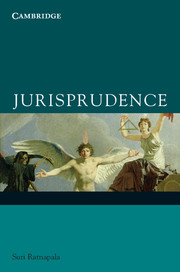11 - Fundamental Legal Conceptions: the Building Blocks of Legal Norms
from PART 4 - RIGHTS AND JUSTICE
Summary
Previous chapters have focused on theories about definitions and descriptions of the law as it is or as it ought to be, and of how law is made or emerges in society. This chapter examines another vital aspect of law: namely, the internal structure of legal norms and the basic conceptions that are used in legal statements. In other words, we look for the building blocks of legal statements, the conceptions without which a law maker cannot make a law. This discussion is centred on the remarkable contribution on this subject made by Wesley Newcomb Hohfeld (1879–1918).
Not every kind of statement makes law. Assume that King Rex is the absolute ruler of a country. The rule of recognition accepted by the country's officials and citizens grants Rex the power to make law according to his will. He simply has to express it and his will becomes law. One morning on awaking, Rex says to no one in particular, ‘I hope the weather will be nice this morning so I can ride my horse’. This is obviously not a law but a hope. At breakfast he tells his Queen, ‘I wish my subjects will be well behaved and law abiding today’. This is also not a law but simply a wish. That afternoon he proclaims at the Royal Council: ‘It is henceforth the law that no trader shall sell a standard loaf of bread for more than one dollar’.
- Type
- Chapter
- Information
- Jurisprudence , pp. 295 - 317Publisher: Cambridge University PressPrint publication year: 2009



